- Administrator
- Albums and Singles
 This is the second in Fovea Hex’s Neither Speak nor Remain Silent series. It is a logical continuation from Bloom but it is more dramatic and beautiful than its predecessor. Clodagh Simonds, the centre of the Fovea Hexverse, has outdone herself this time; it is truly an astonishing work.
This is the second in Fovea Hex’s Neither Speak nor Remain Silent series. It is a logical continuation from Bloom but it is more dramatic and beautiful than its predecessor. Clodagh Simonds, the centre of the Fovea Hexverse, has outdone herself this time; it is truly an astonishing work.
Simonds' words are concise and dense. These aren’t just lyrics but carefully constructed poetry. On paper they take up little space but on the CD she instils a mighty power in them when she sings. This is especially evident in “Huge (The Joy of Trouble),” which opens the CD. It takes up from where the previous volume left off. Simonds is joined again by Brian Eno but this time Roger Doyle and Hugh O’Neill have been added to Fovea Hex’s ranks. The music is subtle and multidimensional. Doyle and Simonds both play glass which gives a fragile and ethereal sound and complements her vocals wonderfully.
The Hafler Trio’s Andrew McKenzie also makes a reappearance on “A Song for Magda.” This instrumental track (well it features voices but their effect is atmospheric as opposed to lyrical) is positively chaotic by Fovea Hex standards. McKenzie’s doesn’t hold as much sway on this as he did on Bloom. Colin Potter joins the group as a performer here and it is his influence that comes to the fore here. The music keeps shifting; it never stays still long enough for anything concrete to take hold. The only constant in the piece is Percy Jones’ remarkably deep fretless bass.
The final track on Huge, “While you’re Away,” is exceptional. Doyle plays more glass on this piece to create that delicate atmosphere again. Simonds plays a gentle rhythm on her harmonium and a small choir of herself, Laura Sheeran and Sarah McQuaid sing blissfully. The lyrics evoke the freedom and the greenness of the countryside: “I’m with the fox and goose my feet run wild and my tongue is loose.” Further adding to the beauty of the piece are the strings arranged and played by Cora Venus Lunny (daughter of the legendary Donal Lunny). Her arrangement is simply gorgeous. The song finishes with crystal clear recordings of a marsh warbler and a dipper, adding a stronger pastoral feeling to the music. I cannot get enough of this piece.
For the lucky few who got Huge early on, there is a bonus disc called “The Discussion” with McKenzie reassembling the material like he did with Bloom. The result is drastically different to what I encountered on the other disc. Whereas Simonds’ music seems very much to be based on earth, looking up, McKenzie’s reinterpretation of the material sounds like the end of 2001: A Space Odyssey should sound. It is celestial and magnificent.
Reading back on what I’ve written, the above could look like gross exaggeration. Huge is an absolutely stunning release which I urge people to get on board about. The one drawback is its brevity: at just under 20 minutes it is gone far too soon. However, being such a rich composition, it lends itself well to repeated listens.
samples:
Read More
- Administrator
- Albums and Singles
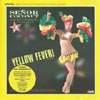 After a mediocre attempt at recording latin versions of rock standards and an appalling attempt at latin standards, Uwe Schmidt revisits the music he clearly knows best: electro pop. This tribute to Yellow Magic Orchestra has the energy and excitement as his Kraftwerk covers despite the overused latin samples and pointless interludes and transitional pieces.
After a mediocre attempt at recording latin versions of rock standards and an appalling attempt at latin standards, Uwe Schmidt revisits the music he clearly knows best: electro pop. This tribute to Yellow Magic Orchestra has the energy and excitement as his Kraftwerk covers despite the overused latin samples and pointless interludes and transitional pieces.
Gathered for Yellow Fever are a number of friends including Mouse On Mars, Burnt Freidman, Towa Tei, and the three members of Yellow Magic Orchestra themselves. Argenis Brito is back on lead vocals and live musicians, when used, make for fantastic results. Thankfully with CD technology, it's easy to avoid every odd numbered track, as they're usually rather irritating 20 second bits with cut ups, sampled words, and underdeveloped themes. In the perfect world these tracks would be far longer and fully realized, like "Coco Agogo" with Akfen and Jorge Gonzalez, and appear on a 10 track second disc, leaving the 10 YMO covers on the first disc.
Perez Prado's oversampled grunt can be found on more than one track (actually, nearly all) and plenty of the rhythms are actually sampled but the music in songs like "Limbo" with Yukihiro Takahashi and "Tong Poo" with Ryuichi Sakamoto is so finely arranged and executed that it becomes easy to forgive. The marimba and vibraphone playing combined with the shaking percussions become so mesmerising on nearly all the proper songs that it's hard not to enjoy. The Haruomi Hosono contributed "The Madman" is a clever nod to the YMO sound in its tacky synth horn and percussion sounds (a'la YMO style) alongside the live horn and percussion playing of Senor Coconut's orchestra while the finale, the classic "Firecracker," is grand indeed with the dense, feverish interplay between the musicians, ending with the crash and long resonant fade of an Asian gong. The classic Macintosh alert sound on track 21 which follows is, as nearly all the other odd numbered track titles, completely useless.
I warmly welcome more Senor Coconut releases recycling the techno pop that Schmidt and many German music nerds grew up on, but if I see more Deep Purple covers or original attempts at Favela, I'll know to stay away.
samples:
Read More
- Administrator
- Albums and Singles
 With Baird’s deep, commanding voice, Lullaby for Strangers is more likely to induce troubled sleep than peaceful rest. In fact, her hypnotic singing could very well induce trances, if not somnambulance.
With Baird’s deep, commanding voice, Lullaby for Strangers is more likely to induce troubled sleep than peaceful rest. In fact, her hypnotic singing could very well induce trances, if not somnambulance.
Baird is like a siren of the deep woods who can enchant travelers with a few well-chosen words. Songs like “Breaking the Roofs” and “The Last Word” remind me of folk tales in which faeries kidnap humans. “Morning Song #2,” on the other hand, sounds like an organ that’s played late at night in a forest clearing, while everyone else is fast asleep and upon waking cannot account for their disturbing dreams. “Storms Stay Fine” is the song that’s the most like a lullaby, with water and Baird’s soothing singing.
Baird’s only misstep is “Bury Deeper,” which is too overtly morbid and has a vocal melody that’s a little grating at times, but the song is so brief that it subtracts very little from the whole. As further testament to her talent, Baird also plays almost all of the instruments on the album yet makes it sound as if she has many collaborators with their own communication styles. Although the album runs a little short of half an hour, I prefer Baird’s economy of expression compared to an album that’s padded merely to fulfill running length expectations. Lullaby for Strangers proves that she can bewitch in a short amount of time.
samples:
Read More
- Administrator
- Albums and Singles
 Auto Da Fe use a number of exotic instruments with pleasant, albeit mostly straightforward results. The singing, however, immediately reminded me of class field trips to the Renaissance Fair, an association I unfortunately couldn’t shake throughout the course of the album.
Auto Da Fe use a number of exotic instruments with pleasant, albeit mostly straightforward results. The singing, however, immediately reminded me of class field trips to the Renaissance Fair, an association I unfortunately couldn’t shake throughout the course of the album.
Despite their attempts to evoke Eastern lands, this medieval European connotation is especially apparent to me on songs such as “Past Times,” “Child of Typhoon,” “Amanda Blaine,” and “Neptune Society Ball.” Sometimes, like on “Little Alili,” “Ne’er Do Will” and “Bao Ba Cha,” I liked the music but couldn’t get past the stagnant vocal melodies. This was particularly disappointing on “Ne’er Do Will,” since the music itself is some of the most transportive on the album. The best vocals are found on “Huaf Weishenme,” because the approach differs slightly from the others, but it’s too little too late.
Almost by default, I prefer the album’s instrumentals, although some of them have a faux-ethnic quality I just couldn’t swallow. “Mao Mcow” and the title track are played well, though ultimately sound too Western to be convincing. “Just Now” has propulsive energy that’s undermined by random shouts that I assume are supposed to be encouraging, but took me out of the song. In contrast I enjoyed all of “Sophie” quite a bit, a piece which sounds like something to be played at a Sicilian mobster’s funeral and isn’t like anything else on the album.
I appreciate the fact that the group’s trying to do something different, but too often their attempts sound forced or naïve. Rather than trying to bring together so many disparate styles, they might do better by exploring one or two in depth.
samples:
Read More
- Administrator
- Albums and Singles
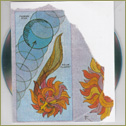 Taking a side step from his series of numbered Astral Social Club volumes, Neil Campbell drops a quick two track smack round the head. Recorded live in April 2006, this may be titled after a bolt from the heavens but it’s much less rapturous than his usual material. This is a simpler, sweatier, and less delicately formed ASC release that shows him in a heads down noisier drive.
Taking a side step from his series of numbered Astral Social Club volumes, Neil Campbell drops a quick two track smack round the head. Recorded live in April 2006, this may be titled after a bolt from the heavens but it’s much less rapturous than his usual material. This is a simpler, sweatier, and less delicately formed ASC release that shows him in a heads down noisier drive.
While the guitar is the central component of both tracks here, it’s used in very different ways. Quickly switching from punchy work which spreads out to an extended guitar squall, the sounds on "Passing Star" are the more frantic of the two. Even so, the track fails to really catch fire in comparison to "Solar Filament" or the Astral Social Club’s previous incredible output.
The stomp of "Solar Filament" has a hell of a lot less high end than its predecessor, taking a thicker thrashier route. Rhythmically stapled through the chest with a cheap wine Mo Tucker bash, this track doesn’t need to sink into really heavy or dubby depths. Instead it remains a fairly steadily splurging digital merge of elements. Like some gut punched and winded organism the stratums breathily heaves under the riffage. The layering of sounds here fails to shimmer like Campbell’s official Astral Social Club volumes, but this punked out path is equally as engrossing. At around the nine-minute mark the main thread is derailed through a burst of FX, a semtex strapped fuzz pedal takes its cue to spill the guitar one louder across the track. At its core lies what is either middle eastern music layered at three times the speed or metal girders attacked by bees; either way it’s a furious melee of notes. Just as the swarming stomp finally threatens to spill over into firework melodies the whole thing zips off into the distance like a tape reel running out.
samples:
 
Read More
- Administrator
- Albums and Singles
 The Matinée Orchestra’s debut album is a treat. It is folky and psychedelic but not like the current batch of artists like Devendra Banhart et al. Instead The Matinee Orchestra combines a mixture of traditional folk styles with modern technology and atypical instruments. The result is a wonderful collection of music with only a very occasional lapse in quality.
The Matinée Orchestra’s debut album is a treat. It is folky and psychedelic but not like the current batch of artists like Devendra Banhart et al. Instead The Matinee Orchestra combines a mixture of traditional folk styles with modern technology and atypical instruments. The result is a wonderful collection of music with only a very occasional lapse in quality.
Arable
The album opens promisingly with “Thanking You for Listening,” which starts off with a beautiful trumpet, xylophone and strings introduction. Before long the song slowly changes instrumentation with each instrument playing around the same basic structure but giving radically different effects. Guitars, electronics and cello all add a distinct layer to the song. It all gels together when a beautiful, distant female singer repeats the title of the song over and over again.
The rest of the CD shows a huge variation in instruments. Banjos, flute, violins, electric guitar, acoustic guitar, a wide variety of electronic gizmos, drums, mandolin, field recordings and various noises all give The Matinee Orchestra plenty of room to manoeuver. No two tracks sound too much alike despite sharing a number of common elements. Style and timings are played with to give enough variety to prevent any risk of boredom. There is a lot going on in each piece but the music is mixed very well so that all the components are given their right amount of space. This is especially evident in the extremely long (in length and in title) climax to the album: “It’s a Fantasy World/Everyone has the Right to Protest even if no one Listens.” The music ebbs and flows over some lovely field recordings with as many instruments as possible appearing throughout its 13 minutes. This may give the impression of a clumsy hodgepodge of a track but it is perfectly composed and performed.
“Run for Cover (It’s Going to Rain)” starts off sounding like nearly every folk artist that’s released an album in the last four years. A strummed acoustic guitar and a vocalist that wavers just a little too much nearly make me hit the skip button every time it starts. Luckily some tasteful drumming, trumpet and electronics pull it up to acceptable standards. Memories of the awful intro are dashed with the next piece; “Pray, Rock, Stone, Paper, Scissors.” A music box gives way to a cascade of trumpets which dance around a slow, pulsing bass and guitar rhythm. It is a stunning, simple piece of music.
The first time I listened to this album I thought it was rubbish. Listening to it again and again made me wonder what was wrong with me that first time. The Matinee Orchestra have made an absolutely delightful album. It is cheery, easy to listen to and importantly has enough depth to keep me putting it back in my CD player.
samples:
Read More
- Chris Zaldua
- Albums and Singles
From the get-go, the mood is set by the first sample, a rainy thunderstorm. As cliche as that might sound, Ozeanische Gefühle truly is a creepy album. The drones creep into the picture like glaciers, quiet at first but building to throbbing heads that ebb and flow away. This album makes me feel like I'm sitting in a run-down shack in an empty field at night during a rainstorm, but it goes beyond that: it's an engaging,interesting album. Incredibly, there are no boring moments to be found here. I'm hoping Matt Waldrom returns to the unsettling-drone arena again, because he is clearly good at what he does.
Read More
- Administrator
- Albums and Singles
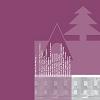 Field recording isn’t just pointing a microphone at your scene of choice and hitting record. There is a skill in capturing the atmosphere and life of the moment and allowing a listener to recreate the scene in their mind in vivid Technicolor. All of the artists featured on Recorded in the Field by… have this skill in spades.
Field recording isn’t just pointing a microphone at your scene of choice and hitting record. There is a skill in capturing the atmosphere and life of the moment and allowing a listener to recreate the scene in their mind in vivid Technicolor. All of the artists featured on Recorded in the Field by… have this skill in spades.
The variety of recordings included on this album is a treat for the ears. The 19 vignettes document a wide array of environmental, natural and human situations. Of course there’s the token recording of crows too. I’m convinced to become an official field recording artist you have to make at least one recording of a murder of crows. Dallas Simpson’s “The Valley of the Crows” is a better than expected variation on this theme. There’s only so much that can be done with crow calls but some recordings have more ambience than others and this is one such case. Far more interesting is “Küstenvögel in Dünen” by Lasse -Marc Riek, a recording of many different species of coastal birds. It is a beautifully clear recording and evokes pleasant memories for me of going birdwatching on the beach.
Most of the recordings make great use of space. Some give the feeling of being right there in the middle of what is being recorded. The best piece is undoubtedly Dronaement’s “Waterbeat” which is the sound of gurgling water in a pipe recorded very closely. It is claustrophobic but intensely pleasurable. On the other hand, “Niagara Falls” by [sic] reduces the mammoth intensity of the mighty waterfall to a tinny rumble. It is a nice touch to reduce something so big and earthly to a sound so thin and otherworldly. As expected, Chris Watson’s contribution, “By Kelso Dunes,” is a masterclass in creative recording. His is the only track without any notes accompanying it so I don’t know what exactly it is but it sounds hot and dusty.
The wealth of wonderful recordings on Recorded in the Field by… made me want to listen to the album dozens of times. I could spend hours getting lost in the individual tracks. A lot of traditional ideas such as the humming of bees are turned on their head or at the very least shaken up a little, in the case of the bees the sound of a helicopter in the distance acts as a comment to man’s engineering versus nature’s engineering. I find that the more straightforward a field recording is, the duller it is. Little twists like this adds a spark of excitement to the piece.
This is one of the most enjoyable and fascinating collections of field recordings I’ve heard in a while. There is no piece that approaches even the remotest outposts of boring. It’s rare to find a compilation of any type of music without a dud track but I feel that Recorded in the Field by… is a damn fine assembly of sounds.
samples:
- Chris Watson - "By Kelso Dunes"
- Lasse-Marc Riek - "Küstenvögel in Dünen"
- Dronaement - "Waterbeat"
Read More
- Administrator
- Albums and Singles
 As the title suggests, this album contains two improvised pieces. Each one was recorded live and shows Gaping Maw in great form. The mix is at times unbalanced due to the nature of the recordings but overall this is a fantastic document of two formidable performances.
As the title suggests, this album contains two improvised pieces. Each one was recorded live and shows Gaping Maw in great form. The mix is at times unbalanced due to the nature of the recordings but overall this is a fantastic document of two formidable performances.
The album starts off with a deafening roar of synthesiser and an erratic and frantic snare beat. There is no time given to adjust the volume accordingly. Lasting just over half an hour, it is a muscular musical pummelling that left me feeling sweaty and tired. The trio use a collection of synthesisers, basses and a drum kit to make a dense and powerful racket. Tatsuya Nakatani’s drumming switches from very loose and random destruction of the kit to a tight, driving Krautrockish beat. The other two then weave in and out, sometimes creating a strong rhythm (although not necessarily in time with the drumming) but mainly making an incomprehensible but superb mass of treacly goo.
The second piece is much shorter at ten minutes but has all the quality of the first. It is a completely different vibe compared to the first one, it is much quieter and the tension is thick. Bruckmann and Johnson’s synths sound like air flowing through a ventilation shaft. Slowly the music builds up as the drums come in. Nakatani sounds like a ball of energy let loose on the snare drum. The final two minutes sees the music bubbles over into the intensity heard on the first piece. At this point I felt tired giving such rich music so much attention, I needed the break.
This was my introduction to the group and it has made a bloody impact on me. A quick google has given me fuck all information on them, which is a pity because I want to hear more. Two Improvisations is a little patchy in terms of the sound of the recordings. They are not perfect live recordings but they do capture the force and the power of the performances and sound more than adequate to my ears. A more polished recording might detract from Gaping Maw’s clout. As it stands, this album is a colossal lump of top quality noisy improv.
samples:
- Nervous Center 11.02.01>Chicago (Extract 1)
- Nervous Center 11.02.01>Chicago (Extract 2)
- Candlestick Maker 08.09.02>Chicago
Read More
- Administrator
- Albums and Singles
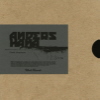 No further proof of noise's validity needs to be made; there are plenty of people in the world messing around in their basements and making annoying sounds that their parents, neighbors, and roommates hate them for. Recorded at the Kongsberg Jazzfestival in 2005, Hana had the chance to annoy a whole crowd of people at once and likely succeeded.
No further proof of noise's validity needs to be made; there are plenty of people in the world messing around in their basements and making annoying sounds that their parents, neighbors, and roommates hate them for. Recorded at the Kongsberg Jazzfestival in 2005, Hana had the chance to annoy a whole crowd of people at once and likely succeeded.
I'm holding on to this disc just for the occasion that someone tells me "anyone can make noise." I suppose, in some way, that's right. Anybody can "play" a guitar and just about anyone can pound out something resembling a rhythm on a drum set, but that doesn't mean anyone's going to want to listen to it. Similarly, just because someone has a guitar, some pedals, and plenty of time on their hands doesn't mean anyone is going to want to hear the results. Anders Hana's noise is bland, a repetitive affair littered with random sounds, but nary a cohesive thought.
Getting through the eight minute opening piece is a chore enough, but finding a way through the final 16 minutes is worse. These evidently untitled tracks sound like a guitar being put through a grinder, though the sound is still definitely that of a stringed instrument. The first choked rhythms and non-melodies are enough to get an idea of what the record is going to sound like: semi mechanical noise with a hint of improvised performance. Some feel that's enough to make certain electronic pieces a cousin to jazz, but I don't.
Although the first track is by far the most chaotic on the disc, none of the calmer bits have anything to offer, they simply drag on longer despite having shorter playing times. I liked the packaging idea Utech had, with the simple cards and semi-transparent sleeves, but the minimalist and relatively eye-catching design (in all its utter simplicity) says nothing about the dull tones kept inside. Had I been at this concert, no matter how loud it was, I would've fallen asleep.
samples:
Read More
- Administrator
- Albums and Singles
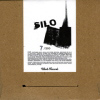 Also on Utech, but of more interest than Anders Hana's release, is the multi-instrumental, sound generating outfit Silo. Cello, trumpet, and "traditional Maori instruments" in hand, this group does more than just pump out disjunctive noise; their soundscapes are intriguing and dark, like a stranger episode of X-Files sewn into a blanket and thrown over my head.
Also on Utech, but of more interest than Anders Hana's release, is the multi-instrumental, sound generating outfit Silo. Cello, trumpet, and "traditional Maori instruments" in hand, this group does more than just pump out disjunctive noise; their soundscapes are intriguing and dark, like a stranger episode of X-Files sewn into a blanket and thrown over my head.
Utech
These sound drones have a connection with early "industrial" albums from the likes of Throbbing Gristle or Coil: the instruments and sounds used are open and natural, reverberating with an acoustic and mysterious quality that makes their beauty much easier to take in (or their ugliness, depending on the person). Squirts of near animal sounds or mechanical gibberish are inserted at key points, producing an illusion of biological growth or innate chaos. These sounds can't help but compliment each other; as far as this self-titled album goes, the choice of trumpet and cello as instruments was a good one. The band mixes the two to perfection for nearly an hour's worth of music.
The liberal use of reverb and echo on this record gets a little redundant, until it is mixed so well on the third track that it's application makes perfect sense. This song swells and moves so effortlessly that it's hard not to believe the band was recording a natural phenomena somewhere in the wilderness of the former Soviet Union. The titanic, brass sound that flows out of the speakers on this disc is imperial and crushing, an iron fist slamming down across a land already torn apart by desolation, massive tracts of land making communication impossible or, worse, undesirable. The mood kept across the entire disc is one of loneliness, tempered with a sense of dread. This is some strange hybrid of ambient and noise music; it commands attention but does so with patient breaths and soft caresses. Once the pressure has finally built up through the course of the record, all that softness has somehow turned into a force to be reckoned with.
This is a fine, airy album deserving of attention. Utech again utilizes a very minimaist packaging scheme and, in the case of this record, it doesn't work very well. All the metallic and fantastic sounds used deserve better representation in the visual realm. This, however, is my only complaint. It only marginally mars the face of this otherwise fine debut on Utech.
samples:
Read More

